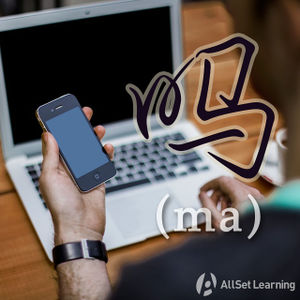Difference between revisions of "Tag questions with "ma""
| Line 49: | Line 49: | ||
{{Rel char|对吗}} | {{Rel char|对吗}} | ||
{{Rel char|好吗}} | {{Rel char|好吗}} | ||
| + | {{Rel char|好}} | ||
| + | {{Rel char|对}} | ||
| + | {{Rel char|是}} | ||
{{Similar|Yes - no questions with ma}} | {{Similar|Yes - no questions with ma}} | ||
{{Similar|Tag questions with bu}} | {{Similar|Tag questions with bu}} | ||
{{Similar|Questions with ne}} | {{Similar|Questions with ne}} | ||
{{Structure|Question Forms}} | {{Structure|Question Forms}} | ||
Revision as of 01:53, 21 June 2013
-
Level
-
Similar to
-
Used for
-
Keywords
As well as yes / no questions, you can also form tag questions with 吗 (ma). Tag questions are quick questions that are tagged on the end of a sentence to ask for confirmation. In English, this is often done with "right?", or by adding the negative form of the verb phrase - e.g., "isn't it?".
The easiest way to do this in Chinese is to add an adjective and 吗 on the end of the sentence.
Basic Pattern
- ……, 好 吗? ..., all right?
- ……, 对 吗? ..., right?
- ……, 是 吗? ..., is that it?
- ……, 可以 吗? ..., is that OK?
By placing these on the end of a sentence, you can soften a suggestion or request confirmation.
Examples
- 我们 喝茶,好吗?Let's drink some tea, OK?
- 咱们去咖啡店,好吗?Let's go to the cafe, OK?
- 他是你哥哥,对吗?He is your older brother, right?
- 你喜欢他,是吗?You like him, right?
- 给我们十二瓶葡萄酒,可以吗?Give us twelve bottles of wine, OK?
See also
Sources and Further Reading
Books
- Chinese: An Essential Grammar, Second Edition (pp. 144-145) →buy
- New Practical Chinese Reader 1 (新实用汉语课本1) (pp. 218) →buy
- Integrated Chinese: Level 1, Part 1 (3rd ed) (p. 106) →buy



